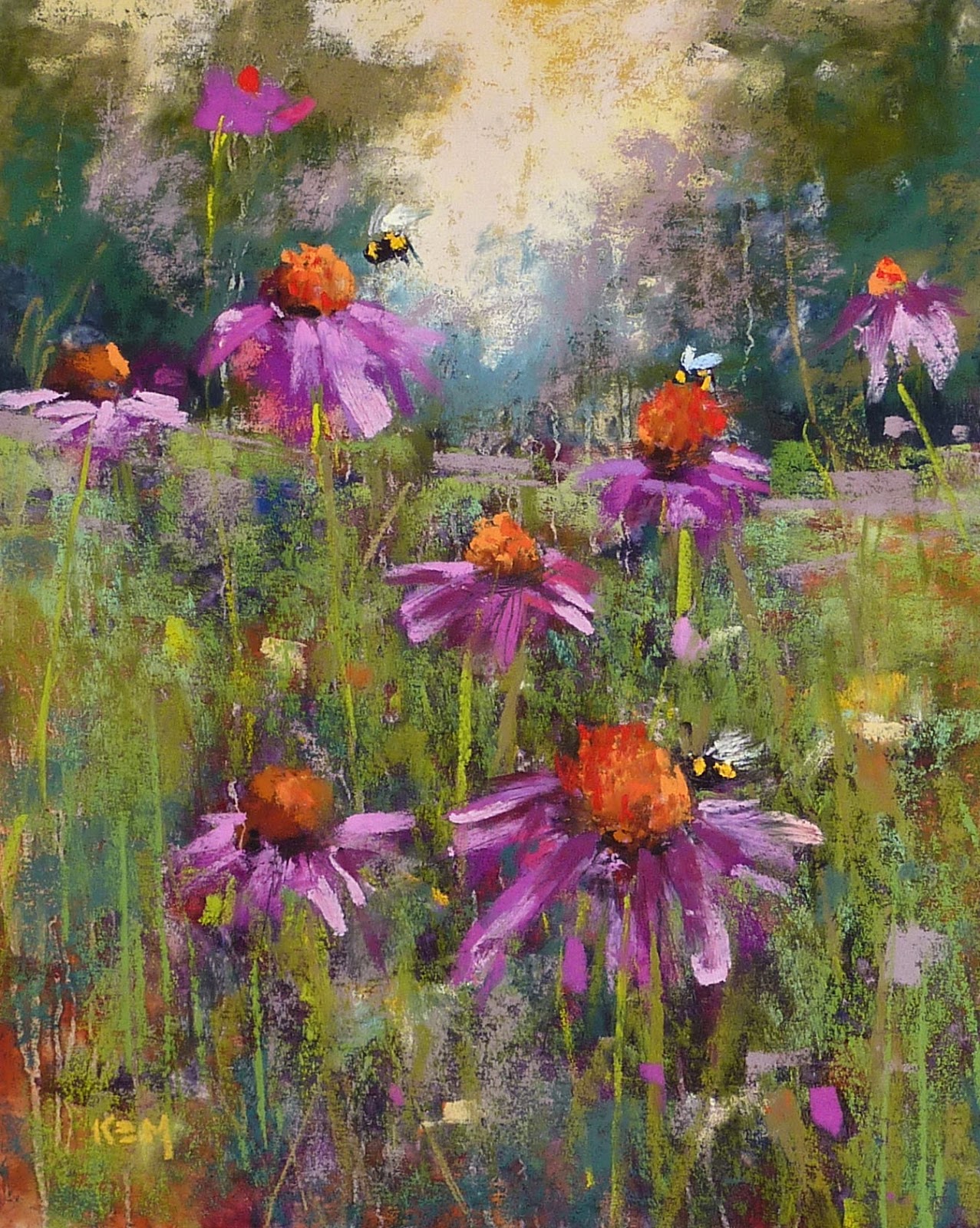| 'Morning on the River' 5x7 pastel ©Karen Margulis sold |
I want to get the signature right because it is an important element in the painting. It becomes a part of the composition. If it is in the wrong place, or the wrong color, too big or too small it can effect the painting. It can through off the balance. It can draw too much attention away from the subject. If it is too small or too close to the edge it will not be visible at all!
Quick Tip: Decide on how you will sign and stick with it. Full name? Initials? Find the tool that works best (see samples below) Practice your signature over and over until it becomes effortless. When it is time to sign pick a spot that balances the composition and sign with authority and pride!
| A few signing tools: pencil, Nupastels, pastel pencil |
The signatures above were done with the sharp point or edge of a hard pastel such as Nupastel.
My signature choice: I decided early on to use my initials. It was quick and easy. The drawback is that people new to my work can't really look my name up. (if you google KEM artist I do come up second but this has taken some time!) I decided to make my letter 'E' with only three lines because I thought it looked cool. I sometimes use pencil to sign on a very light painting. Usually I choose a pastel pencil or sharpened Nupastel. I choose a color that is used in my painting. I make sure the color stands out from the background. I also make sure my signature is not too dark or too thick and heavy.















